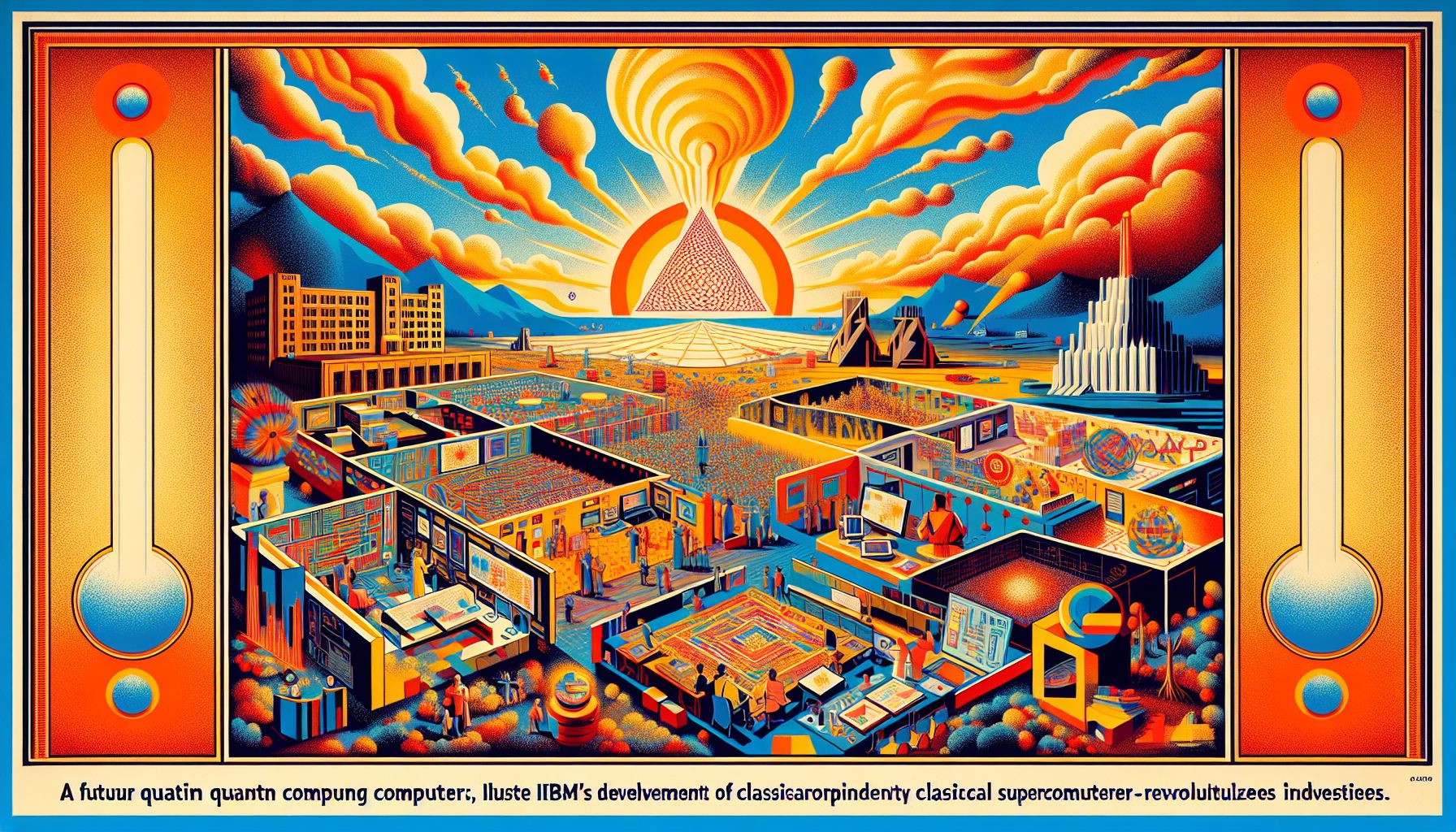Quantum Computing Breakthrough: IBM and AIST Aim for 10,000-Qubit System by 2029

Amsterdam, Thursday, 27 June 2024.
IBM and Japan’s AIST are collaborating to develop a groundbreaking 10,000-qubit quantum computer by 2029, far surpassing current capabilities. This partnership aims to create a system that can operate independently of classical supercomputers, potentially revolutionizing various industries.
Quantum Computing’s Potential
The collaboration between IBM and Japan’s National Institute of Advanced Industrial Science and Technology (AIST) marks a significant step toward the future of computing. Quantum computing harnesses the principles of quantum mechanics to process data in ways that classical computers cannot. By leveraging qubits, which can exist in multiple states simultaneously, quantum computers can perform complex calculations at unprecedented speeds. This breakthrough promises to revolutionize industries that rely heavily on data processing, such as finance, pharmaceuticals, and cybersecurity.
How Quantum Computing Works
Unlike traditional computers that use bits as the smallest unit of data, quantum computers use qubits. Qubits take advantage of superposition, allowing them to represent both 0 and 1 simultaneously. This capability enables quantum computers to evaluate many possibilities at once, vastly increasing computing power and efficiency. Additionally, quantum entanglement allows qubits that are entangled to be correlated with each other, even when separated by great distances, further enhancing computational capabilities.
Challenges and Innovations
Despite its potential, quantum computing faces significant challenges. One major issue is error correction. Quantum systems capable of complex operations are prone to errors and noise, which can disrupt calculations. Researchers at Chalmers University of Technology have developed a system based on continuous-variable quantum computing, using harmonic oscillators to encode information more robustly against errors and noise[3]. This innovation could pave the way for more reliable and longer-lasting quantum computations.
Impact on Industries
Quantum computing is set to transform various sectors. In finance, it can enhance risk assessments, fraud detection, and predictive analytics, making financial systems more secure and efficient. In pharmaceuticals, quantum computing can simulate molecular structures with high accuracy, speeding up drug discovery and reducing costs[2]. Furthermore, quantum computing’s ability to solve complex optimization problems can significantly benefit logistics, manufacturing, and other data-intensive industries.
IBM and AIST’s Ambitious Plan
IBM and AIST’s goal to develop a 10,000-qubit quantum computer by 2029 is ambitious. This system aims to perform calculations without relying on traditional supercomputers, a leap forward in quantum technology. IBM’s current quantum roadmap includes reaching 2,000 qubits by 2033, but this partnership accelerates their timeline significantly[6]. By utilizing AIST’s expertise in AI and semiconductor technology, and IBM’s cutting-edge quantum research, this collaboration could set new standards in quantum computing efficiency and capability.
Future Outlook
The full potential of quantum computing is yet to be realized, but its future looks promising. As advancements in quantum control and error correction continue, scalable and practical quantum computers may soon become a reality. These technologies will not only enhance existing systems but also open new avenues for innovation across various fields. The partnership between IBM and AIST exemplifies the collaborative efforts needed to push the boundaries of what is possible, heralding a new era in computational power and problem-solving efficiency.
Bronnen
- www.euronews.com
- www.forbes.com
- www.sciencedaily.com
- www.mckinsey.com
- www.tomshardware.com
- www.eetimes.com

